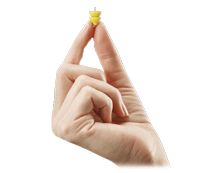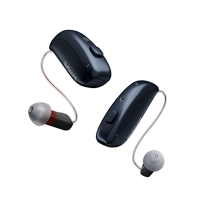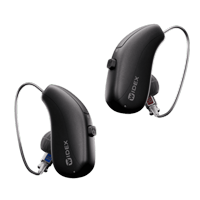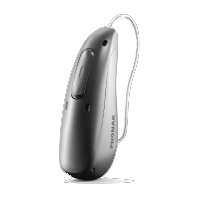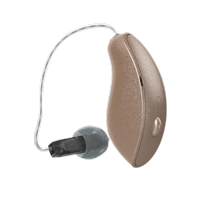If you’ve recently been fitted with hearing aids, you might be wondering how long you should wear them each day. While it’s tempting to jump straight into full-time use, most hearing healthcare professionals recommend a gradual approach that allows your brain and ears to adjust comfortably to this new sensory experience.
Key Takeaway: Most audiologists recommend starting with just a few hours per day (3-4 hours) during the first week and gradually increasing to full-time wear (8-12+ hours) over several weeks. Complete adaptation can take up to four months, so patience is essential during this journey.
Understanding the Adjustment Period
When you first receive your hearing aids, you’re introducing your brain to sounds it may not have processed in months or even years. This sudden influx of acoustic information requires a period of adaptation.
According to hearing specialists at Starkey, “Most people need an adjustment period of up to four months before becoming acclimated to wearing their hearing aids.” This adjustment isn’t just about physical comfort – it’s primarily about neural adaptation as your brain relearns how to process and prioritize sounds.
“When you begin to wear hearing aids, sounds that you may not have heard for years will be restored, but your brain needs practice and re-education to selectively focus on and filter these sounds.”
— Starkey Hearing Technologies
The process is similar to physical rehabilitation after an injury – your auditory system needs time to rebuild its capabilities gradually.
Recommended Wearing Schedule for New Hearing Aids
Audiologists have developed a general timeline for adapting to new hearing aids that maximizes comfort while ensuring steady progress:
Begin by wearing your hearing aids for short periods in quiet, familiar environments like your home. This gentle introduction helps prevent sensory overload while giving your brain its first exposure to amplified sound.
Audiologists at Soundly recommend “targeting 3-4 hours of daily wear time for the first week” in comfortable, quiet environments where you can begin adjusting to your new auditory experience.
Incrementally increase your wearing time by approximately one hour each day. Silicon Valley Hearing suggests continuing in primarily quiet environments while beginning to introduce more challenging listening situations like small group conversations.
During this period, you might start noticing your brain adapting – background noises that seemed overwhelming at first begin to fade as your brain relearns which sounds to prioritize.
By the fourth week, many audiologists recommend wearing your hearing aids throughout your waking hours. Advanced Specialty Care suggests “wearing the hearing aids for between 12 and 18 hours a day, everyday, during all waking hours in order to best acclimate.”
At this stage, you should start experiencing improved speech understanding and less listening fatigue as your brain continues adapting to the enhanced auditory input.
Full adaptation to hearing aids typically takes 4-6 months, according to Bay Audiology. During this period, continue wearing your devices during all waking hours to complete the neural adaptation process.
By the end of this period, wearing your hearing aids should feel natural, and your brain will have relearned how to filter important sounds from background noise.
3-4 hours
5-8 hours
8-12 hours
Full adaptation
Pro Tip: Follow the “Add an Hour” Rule
Many audiologists recommend adding approximately one hour of wearing time each day during the first few weeks. This structured approach helps your brain adapt gradually without becoming overwhelmed.
As Soundly.com suggests, “Target 3-4 hours of daily wear time for the first week, then add an hour daily until you reach 8-10 hours.”
What to Expect During the Adjustment Period
Understanding common experiences during the adaptation process can help you persist through temporary discomfort:
| Timeframe | Common Experiences | What’s Happening |
|---|---|---|
| First Few Days |
|
Your brain is being reintroduced to sounds it hasn’t processed in a long time. This initial flood of sensory information can feel overwhelming. |
| Weeks 1-2 |
|
Your brain is working hard to relearn sound processing. The first two weeks are typically the most challenging adjustment period. |
| Weeks 3-4 |
|
Neural adaptation is progressing as your brain relearns to filter important sounds from background noise. |
| Months 2-4 |
|
Complete adaptation occurs as your brain fully integrates the enhanced auditory input into your normal sensory experience. |
According to Bay Audiology, “The first two weeks with your hearing aids are the most crucial; however, the whole hearing aid adjustment period can be anywhere from four to six months.” This extended timeline highlights the importance of patience during the adaptation process.
When to Contact Your Audiologist
While some discomfort during adjustment is normal, contact your hearing care professional if you experience:
- Pain in your ear canal
- Persistent headaches
- Skin irritation or soreness
- Consistent feedback or whistling
- Sound that remains uncomfortably loud despite adjustment period
These symptoms may indicate that your hearing aids need adjustment by your audiologist.
Tips for a Successful Adjustment Period
These strategies can help make your adaptation to hearing aids smoother and more successful:
1. Start in Quiet Environments
Begin your hearing aid journey in familiar, quiet settings like your home. This controlled environment allows your brain to begin processing amplified sounds without the challenge of background noise.
Soundly.com advises to “spend your first listening hours in quiet and comfortable environments. Your brain will naturally be overwhelmed at the start, and it’s best to be somewhere you feel comfortable.”
2. Practice Active Listening
Hearing Aid UK recommends actively engaging with your new hearing ability: “Talk out loud as much as you can to recognize and get used to your own voice with your devices. Listen to audiobooks and also push yourself to figure out which direction sounds are coming from.”
This deliberate practice helps your brain adapt more quickly to processing sounds through your hearing aids.
3. Adjust Volume Instead of Removing
When sounds become overwhelming, experts suggest reducing the volume rather than removing your hearing aids completely. This approach maintains the adaptation process while providing relief.
As recommended by Soundly.com, “Instead of taking your device out, try turning down the volume and slowly working it back up” as you adjust.
4. Keep a Listening Journal
Track your experiences, challenges, and improvements in different listening environments. This information helps your audiologist make appropriate adjustments to your devices during follow-up appointments.
The American Academy of Audiology notes that “a daily journal can help track your questions and concerns” during the adjustment period.
5. Schedule Regular Follow-up Appointments
Most audiologists recommend multiple follow-up appointments during your adjustment period. Advanced Specialty Care explains that “You’ll have multiple follow-up appointments during this 45 day trial period so your audiologist can help you adjust.”
These appointments allow for programming adjustments based on your real-world experience with the devices.
6. Practice Device Handling
Many new users feel nervous about handling their hearing aids. Advanced Specialty Care suggests “practicing at home every day during that first 2-week period by laying a towel out on the kitchen table; practicing putting the hearing aids in and taking them out, changing the batteries.”
This practice builds confidence in managing your devices independently.
Why Consistent Wear Is Critical for Adaptation
You might wonder why audiologists emphasize wearing your hearing aids consistently, even when it feels challenging. The answer lies in how your brain adapts to sensory input.
Advanced Specialty Care explains: “The only way to get used to hearing aids and the additional volume is to actually put the hearing aids in your ears and to wear them consistently.” Without regular exposure, your brain doesn’t get the practice it needs to adapt to processing sounds through your hearing aids.
Interestingly, audiologists can track your actual wearing time when you return for follow-up appointments. The data shows that patients who wear their devices consistently adapt more quickly and report higher satisfaction.
“What patients don’t realize is that every time the audiologist hooks up the hearing aid to the programming computer, they can see how many hours a day the hearing aids have been worn.”
— Advanced Specialty Care
Special Considerations for Different Hearing Environments
As you progress through your adaptation period, gradually introduce more challenging listening environments:
Quiet Conversations (Weeks 1-2)
Begin with one-on-one conversations in quiet environments. This allows you to focus on speech understanding without competing background noise.
Small Groups (Weeks 3-4)
Progress to small group conversations in relatively quiet settings. This introduces the challenge of following multiple speakers but in a controlled environment.
Noisy Environments (Weeks 5+)
Eventually, practice listening in more challenging environments like restaurants or social gatherings. Many modern hearing aids have special programs for these situations that your audiologist can activate.
Using Technology to Your Advantage
Most modern hearing aids offer smartphone apps that allow you to adjust settings based on your environment. As you progress through your adaptation journey, explore these features with guidance from your audiologist.
Silicon Valley Hearing notes that “Modern hearing aids come with various features designed to help in different listening situations.” Learning to use these features effectively can significantly improve your adaptation experience.
Conclusion: Patience Leads to Success
Adapting to new hearing aids is a journey that requires patience, consistency, and a gradual approach. By following the recommended wearing schedule – starting with just a few hours daily and progressively increasing to full-time wear – you give your brain the opportunity to adapt comfortably to your restored hearing ability.
Remember that complete adaptation typically takes several months, so don’t be discouraged by initial challenges. With persistence and regular follow-up with your audiologist, you’ll likely find that your hearing aids become an integral, natural part of your daily life – opening up a world of improved communication and connection.
Turning Life up Through Better Hearing
For over 30 years, California Hearing Center has been helping people improve their lives through better hearing. Whether you are having a conversation with your family, enjoying a meal at a restaurant, meeting with people at work, out shopping with friends, or taking a walk in the park, hearing well is an essential part in turning up the enjoyment of life.
Or call us at (650) 342-9449
Keywords: hearing aids wearing schedule, how many hours wear hearing aids, new hearing aids adjustment period, hearing aid adaptation timeline, getting used to hearing aids, audiologist recommendations for new hearing aids, hearing aid wear time


